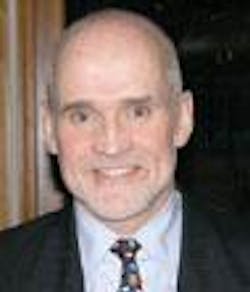Worldwide needs demand strong scientific commitment
When the International Society for Optical Engineering (SPIE) was founded 50 years ago, there were no lasers, and lens design was performed using electromechanical machinery and slide rules. Times have changed dramatically in just a few decades. Science and technology are contributing immeasurably to our quality of life, our health, and our longevity. And that is not the only thing that has changed.
Worldwide, but especially in the developed world, young people are less interested in science and engineering than they were in the heady days of Sputnik, moonwalks, and Hubble vision. This is alarming not just for often-cited chauvinistic economic reasons. It is also particularly alarming because science and engineering are crucially needed to address major problems facing humanity, which include depletion of water and energy resources, climate change, aging populations, and health threats (such as AIDs especially in Africa, superbugs in the U.K., and the possible avian flu pandemic). In addition, a scientifically literate population is desperately needed in democratic societies to help make the required difficult decisions (see www.laserfocusworld.com/articles/195340).
Continued extraordinary progress in science and technology is obviously necessary. But will we continue to make it and if so, how? Will we see the same positive economic outcomes per research dollar as R&D becomes dispersed over Friedman’s “flat earth”? What will be the impact of the new global demographics of research? What will prove to be the actual key factors to innovation?
Answers to these questions are being earnestly sought in Europe, where factors related to globalization and an aging population have slowed economic growth and productivity considerably since the mid-1990s. Concerns have been raised that without significant structural changes, economic growth rates in Europe might halve from the current level to 1% annually by 2040, with correspondingly significant effects on standards of living. Research is generally acknowledged as an essential contributor to economic growth in modern societies, but despite a strong heritage in research that is continuing in many centers throughout Europe, economic returns are by and large not being seen, at least on the scale of a Silicon Valley, CA.
The European Union lags behind the United States in terms of research-based innovation, and the gap is sometimes attributed to the lower proportion, only about 55%, of funding in Europe from the private sector. Poor market coupling may play a role, but the success of Asian high technology enterprises argues against this premise. In March of 2000, the European Community launched a Lisbon Strategy for improving economic productivity, which ultimately targeted an investment of 3% of the GDP in R&D by 2010. “Halfway point” progress reviews however, indicated that despite enthusiasm for the Lisbon Strategy, E.U. research intensity had only grown from around 1.8% to about 2% by 2005. A New Start for the Lisbon Strategy was launched in February of last year.
Answers to troubling questions are also being sought in the U.S., which in 2004 for the first time experienced a deficit in high-technology trade. As a result of globalization and advances in communications, a substantial portion of the U.S. workforce finds itself in direct competition for manufacturing jobs, as well as positions in finance, engineering, and research, with lower-wage workers around the globe. Last spring, concern in the U.S. Congress elicited bipartisan letters-one from Senators Lamar Alexander (R-TN) and Jeff Bingaman (D-NM) and another from Representatives Sherwood Boehlert (R-NY) and Bart Gordon (D-TN)-to the National Academies of Sciences and Engineering, requesting a formal study to help guide congressional deliberations. In response, the National Academies created a Committee on Prospering in the Global Economy of the 21st Century charged with recommending specific steps to strengthen the quality of life in America.
In a recently issued comprehensive report entitled Rising Above The Gathering Storm: Energizing and Employing America for a Brighter Economic Future, the committee reported deep concerns that the scientific and technical building blocks of U.S. economic leadership are eroding at a time when many other nations are gathering strength. “We strongly believe that a worldwide strengthening will benefit the world’s economy-particularly in the creation of jobs in countries that are far less well-off than the United States,” they wrote. “But we are worried about the future prosperity of the United States.” The committee identified creating high-quality jobs for Americans and responding to the need for clean, affordable, and reliable energy as key challenges going forward. The committee grouped its recommendations into four basic areas for improvement: K-12 education, research, higher education, and economic policy.
Revitalization of the scientific enterprise is urgently needed, and the National Academies’ report and E.U. efforts are moves in the right direction. The technical profession must support these initiatives, take a much more active role in influencing government, and become much more welcoming to young people, the gadget generation. We need to communicate the excitement, rewards, and fun of science and engineering. Above all, we must awaken from social apathy to recognize and actively shoulder our civic responsibilities to future generations.❏
EUGENE ARTHURS is the executive director of the SPIE, P.O. Box 10, Bellingham, WA 98227-0010; e-mail: [email protected]; www.spie.org.

